Discover 11 hidden attractions, cool sights, and unusual things to do in Oskaloosa (United States). Don't miss out on these must-see attractions: Daniel Nelson House and Barn, Lake Keomah State Park, and College Avenue Friends Church. Also, be sure to include St. James Episcopal Church in your itinerary.
Below, you can find the list of the most amazing places you should visit in Oskaloosa (Iowa).
Table of Contents
Daniel Nelson House and Barn
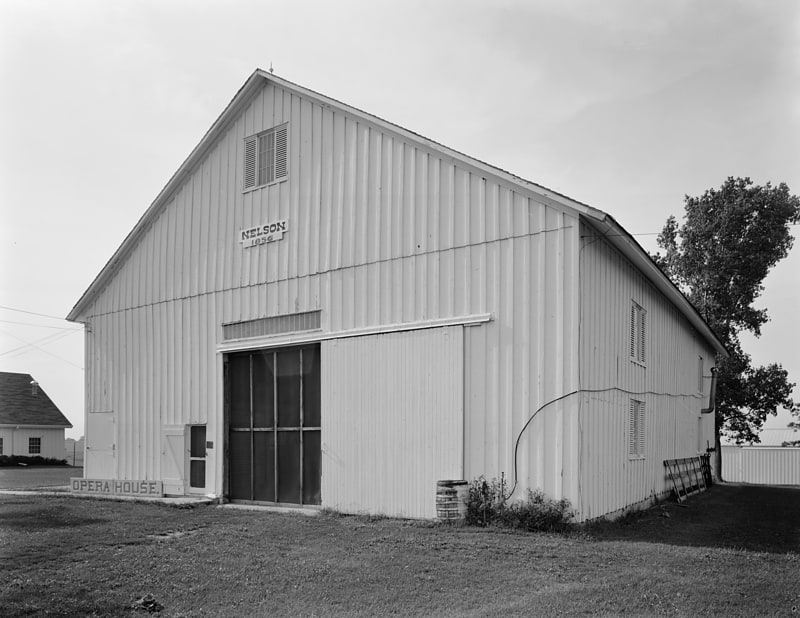
Museum. Daniel Nelson House and Barn, also known as the Nelson Pioneer Farm and Museum, are historic buildings located north of Oskaloosa, Iowa, United States. Daniel and Margaret Nelson settled here in 1844, a year after this part of Iowa was opened to settlement by the U.S. Government. Their first home was a log structure, non-extant, located northeast of the present house. The present house is a two-story, brick structure with a gable roof. The wooden porches on the front and back of the house date from 1898 to 1900. The large barn measures 61 by 46 feet, and was built in 1856. It is composed of board and batten construction from oak that was milled on the site. It was used largely as a granary, rather than a shelter for farm animals. Three other buildings included in the historic designation include the summer kitchen, woodshed, and a small outdoor privy. The dates of construction for the three frame buildings is unknown. The farm remained in the Nelson family until 1941 when it was abandoned with most of the original furnishings intact. The property was donated to the Mahaska County Historical Society, which now operates it as a museum. Other historic buildings have been moved to this location over the years. It was listed on the National Register of Historic Places in 1974.[1]
Address: 2211 Nelson Ln, 52577-9609 Oskaloosa
Lake Keomah State Park
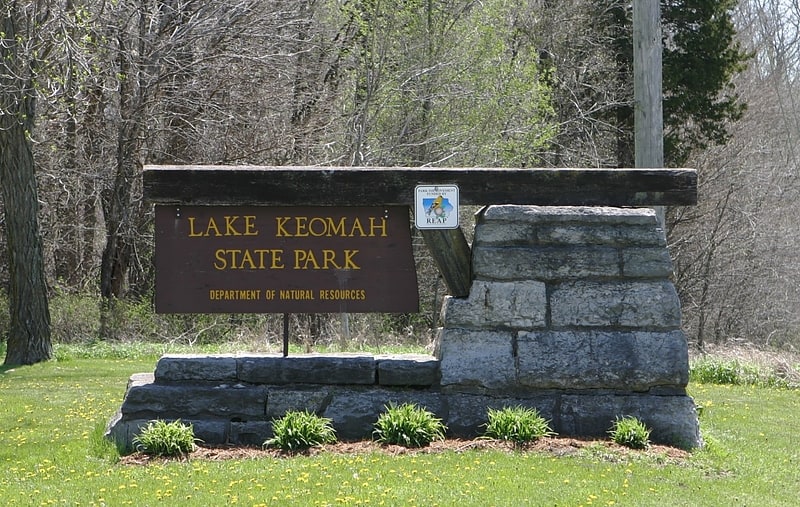
State park in Mahaska County, Iowa. Lake Keomah State Park is a state park of Iowa, USA. It is in Mahaska County. To the park's immediate east is Keomah Village and the park is approximately 4 miles east of Oskaloosa.
Lake Keomah State Park is a 366-acre (148 ha) state park that surrounds and includes Lake Keomah. Lake Keomah is an 83-acre (34 ha) reservoir.[2]
Address: 2720 Keomah Ln, 52577-9657 Oskaloosa
College Avenue Friends Church
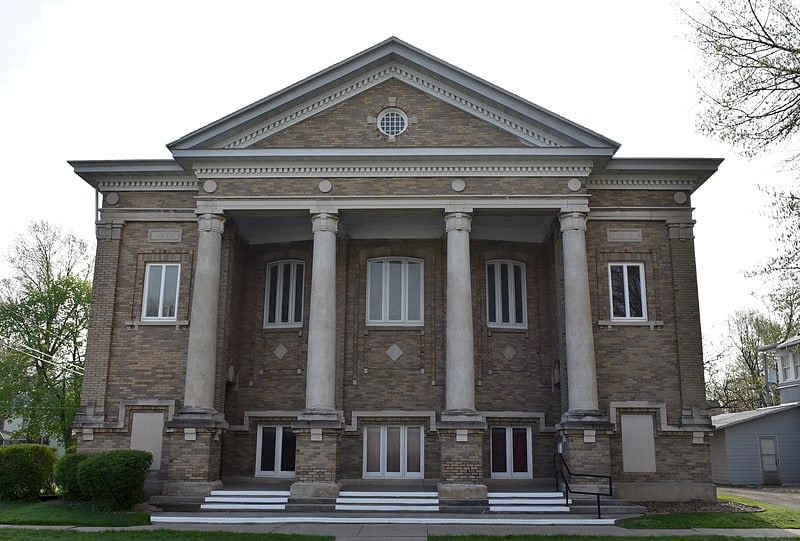
Church building. Iowa Yearly Meeting House-College Avenue Friends Church is a historic church building located in Oskaloosa, Iowa, United States. The Colonial Revival structure was designed by Bloomington, Illinois architect A.T. Simmons, and completed in 1913. As their membership declined, Quakers in Iowa decided to concentrate on a few fundamental tenets of their faith, but gave way on their traditional concerns about simplicity and restraint. This more elaborate building replaced a simple 2½-story, brick and stone structure that was completed in 1865. The building project was a cooperative arraignment that included the Yearly Meeting, the Monthly Meeting, and nearby William Penn College. Oskaloosa had been chosen as the location of the Iowa Yearly Meeting, or the denominational headquarters, because of its central location to where the Quakers settled west of the Mississippi River. The previous building had separate meeting facilities for men and women, and this one does not. That separation was no longer considered necessary by the time this building was built. It was listed on the National Register of Historic Places in 1996.[3]
Address: 912 N C St, 52577-2129 Oskaloosa
St. James Episcopal Church
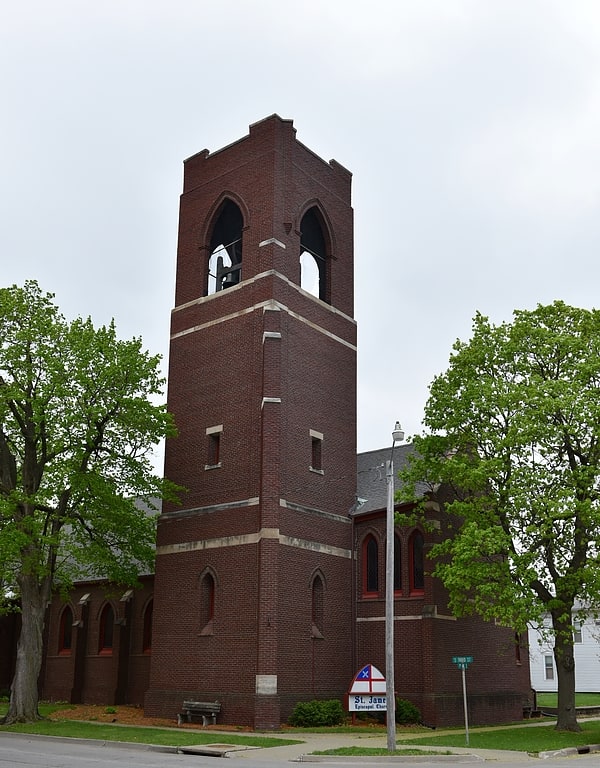
Episcopal church in Oskaloosa, Iowa. St. James Episcopal Church is a parish of the Diocese of Iowa located in Oskaloosa, Iowa, United States. It was listed on the National Register of Historic Places in 1991.[4]
Address: 207 S 3rd St, 52577-3137 Oskaloosa
Oskaloosa City Hall
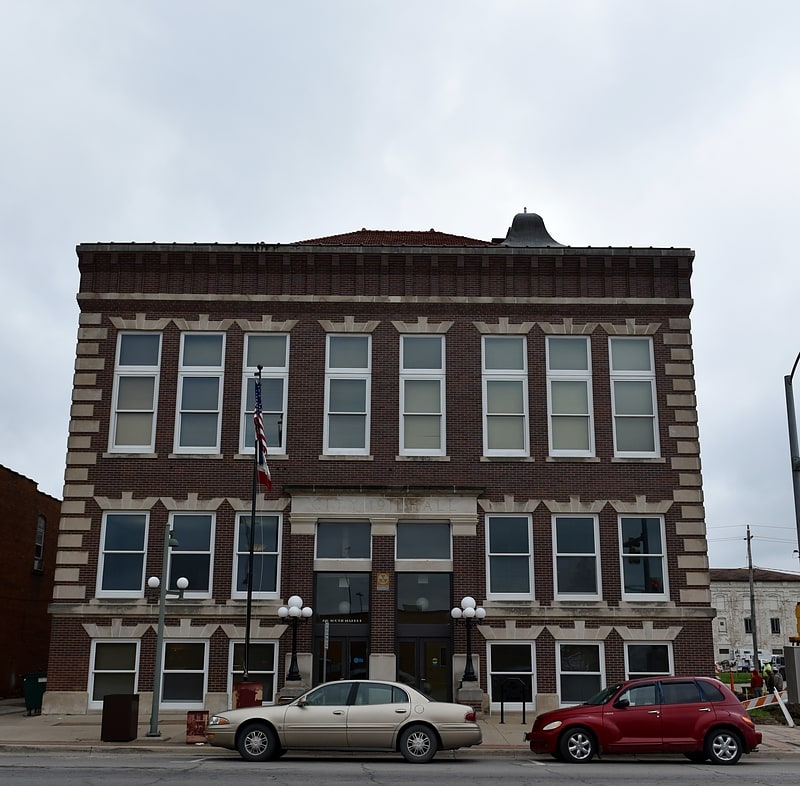
The Oskaloosa City Hall is a historic government building located in Oskaloosa, Iowa, United States. It was designed by Des Moines architect Frank E. Wetherell, an Oskaloosa native, in the Renaissance Revival style. It was originally designed along with the adjoining fire station in 1905. The buildings were designed for phased construction, and the city council decided to build the fire station first. It was individually listed on the National Register of Historic Places in 1991. Previously it had been included as a contributing property in the Oskaloosa City Square Commercial Historic District.[5]
Oskaloosa Public Library
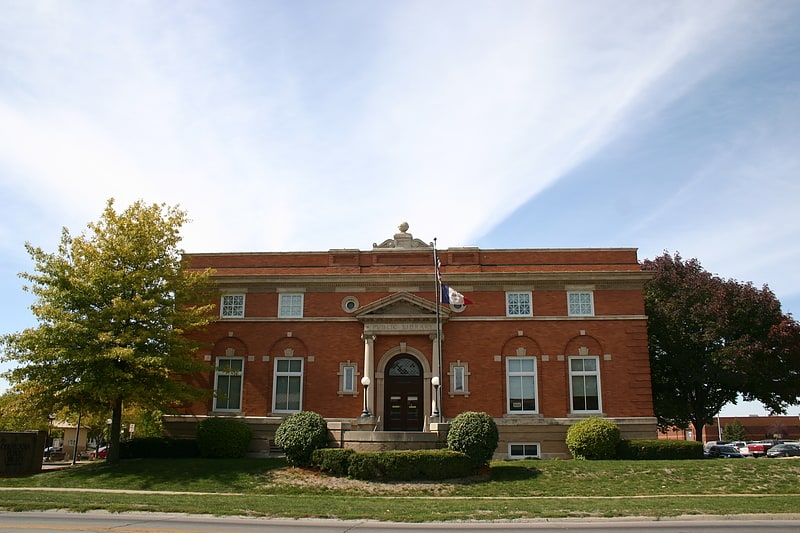
Building in Oskaloosa, Iowa. Oskaloosa Public Library is a facility located in Oskaloosa, Iowa, United States. Construction of the library was launched in 1902 with a grant from the Carnegie Corporation of New York. The building was added to the National Register of Historic Places in 1991.[6]
Address: 301 S Market St, 52577 Oskaloosa
Oskaloosa City Park and Band Stand

The Oskaloosa City Park and Band Stand is a nationally recognized historic district located in Oskaloosa, Iowa, United States. It was listed on the National Register of Historic Places in 1983. The listing includes one contributing site and five contributing objects. The town square, which is the site, was part of the original town plat in 1844. Landscaping projects were undertaken in the 1860s, 1911 and 1970–1971. In addition to the landscaping the sidewalks and curbing were installed in 1911. The bandstand in the center was designed by Des Moines architect Frank E. Wetherell, an Oskaloosa native, and built in 1912. The 29-foot high octagonal structure is composed of concrete, iron and steel.
In addition to the bandstand, the other historic objects include the Spanish–American War torpedo (c. 1900); Chief Mahaska sculpture by Fry (1909); Gold Star Mothers' rose bed (c. 1920); and the Women's Relief Corps memorial (1920). It was included in the Oskaloosa City Square Commercial Historic District, which surrounds it, in 1986.[7]
Forest Cemetery Entrance

Cemetery. The Forest Cemetery Entrance is a historic structure located in Oskaloosa, Iowa, United States. It was designed by Frank E. Wetherell and built in 1915. While he was known for his buildings, he was also involved with civic improvement projects in Des Moines that included the beautification of the banks along the Des Moines River. This included a series of walls and walkways, and planning new thoroughfares to ease traffic congestion. The two pillars are composed of rusticated grey Barre Granite. They have name of the cemetery, "Forest," carved on them. Walls extend from the pillars and include openings for sidewalks. They end at iron fences. It was listed on the National Register of Historic Places in 1991.[8]
Maj. James W. McMullin House
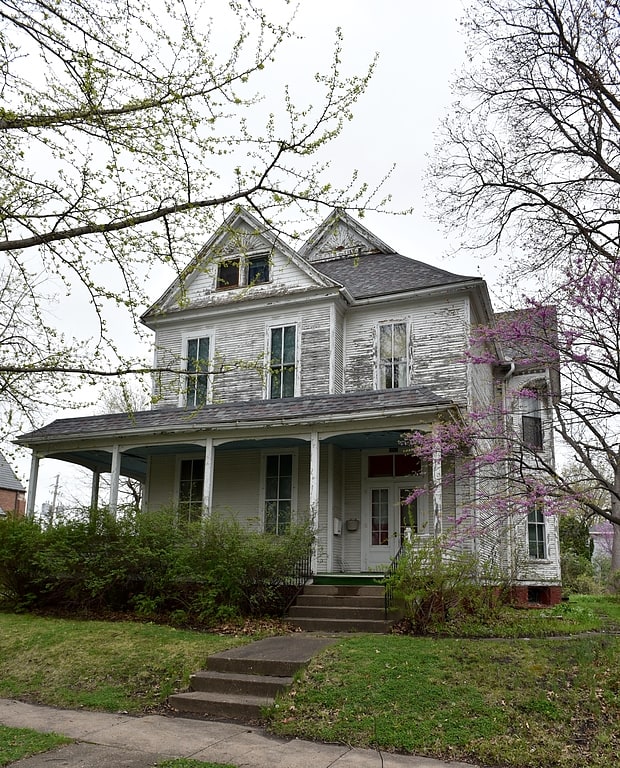
The Maj. James W. McMullin House is a historic residence located in Oskaloosa, Iowa, United States. McMullin received his commission in the army during the American Civil War. He returned to Oskaloosa after his service where he established a successful transport and livery business that served Mahaska County's coal industry. McMullin meant for his Queen Anne style home to be a showplace. It was designed by an unknown architect to be built of brick, but because of price gouging by local brick dealers he chose to have his home built of wood instead. Structurally, the house has a balloon frame covered with clapboards. It features an asymmetrical plan, a wrap-around porch, and bay windows. The interior is noteworthy for its woodwork and exuberant plasterwork. It was listed on the National Register of Historic Places in 1985.[9]
Thomas J. Conover House
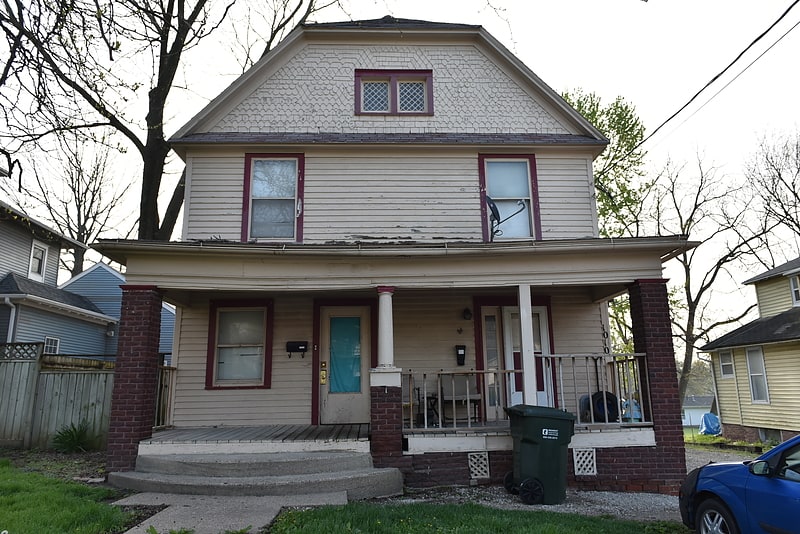
The Thomas J. Conover House is a historic residence located in Oskaloosa, Iowa, United States. Thomas J. Conover was a farmer who retired to town as a widower about 1910. He and his daughter Casa Mae Conover, lived here together while she worked at William Penn College. Between 1925 and 1951 she was a teacher of religious education, assistant registrar, secretary to the president, and the registrar. Single women who worked for the college rarely owned their own home. This suggests the difference in pay between men and women at the institution, even as it espoused gender equality. Casa had to live with her father and care for him in his old-age. Their Colonial Revival house was built about 1910. It is a two-story, frame, single-family dwelling that features a gable-end facade roof with hip-on-gable roof embellishment, fishscale shingles on the gable end, and a full-length front porch. It is the Casa Mae Conover's association with the school in the context of the Quaker testimony in Oskaloosa that makes this house historic. It was listed on the National Register of Historic Places in 1996.[10]
Spurgin Residence
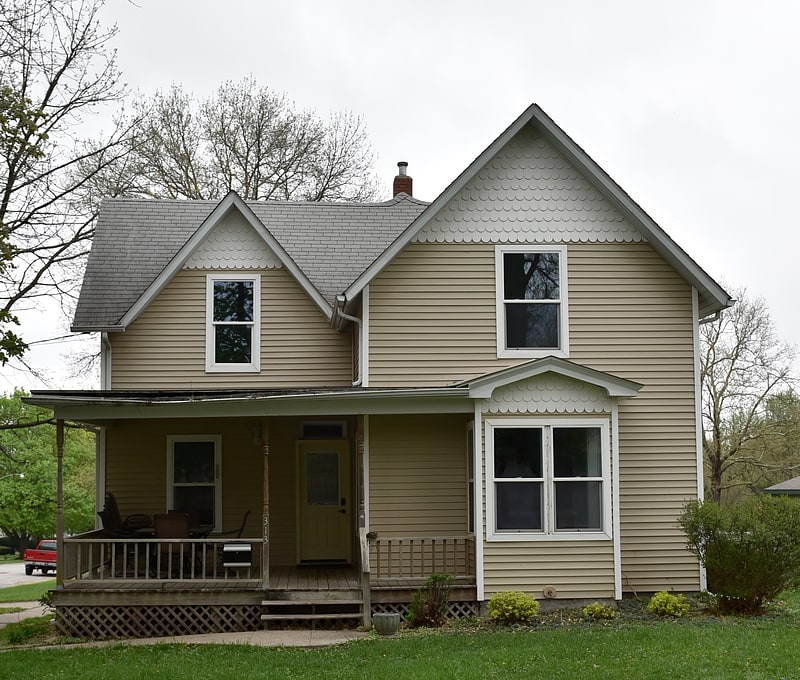
The Spurgin Residence, also known as the Rice House, is a historic residence located in Oskaloosa, Iowa, United States. The 1½-story, frame, single-family house was built in 1895. From 1916 to about 1936 the structure was used as a "practice house" for domestic science instruction and student housing at nearby William Penn College. It is its association with the college in the context of the Quaker testimony in Oskaloosa that makes this house historic. The name "Spurgin Residence" was used by the college during its period of significance. It was listed on the National Register of Historic Places in 1996.[11]